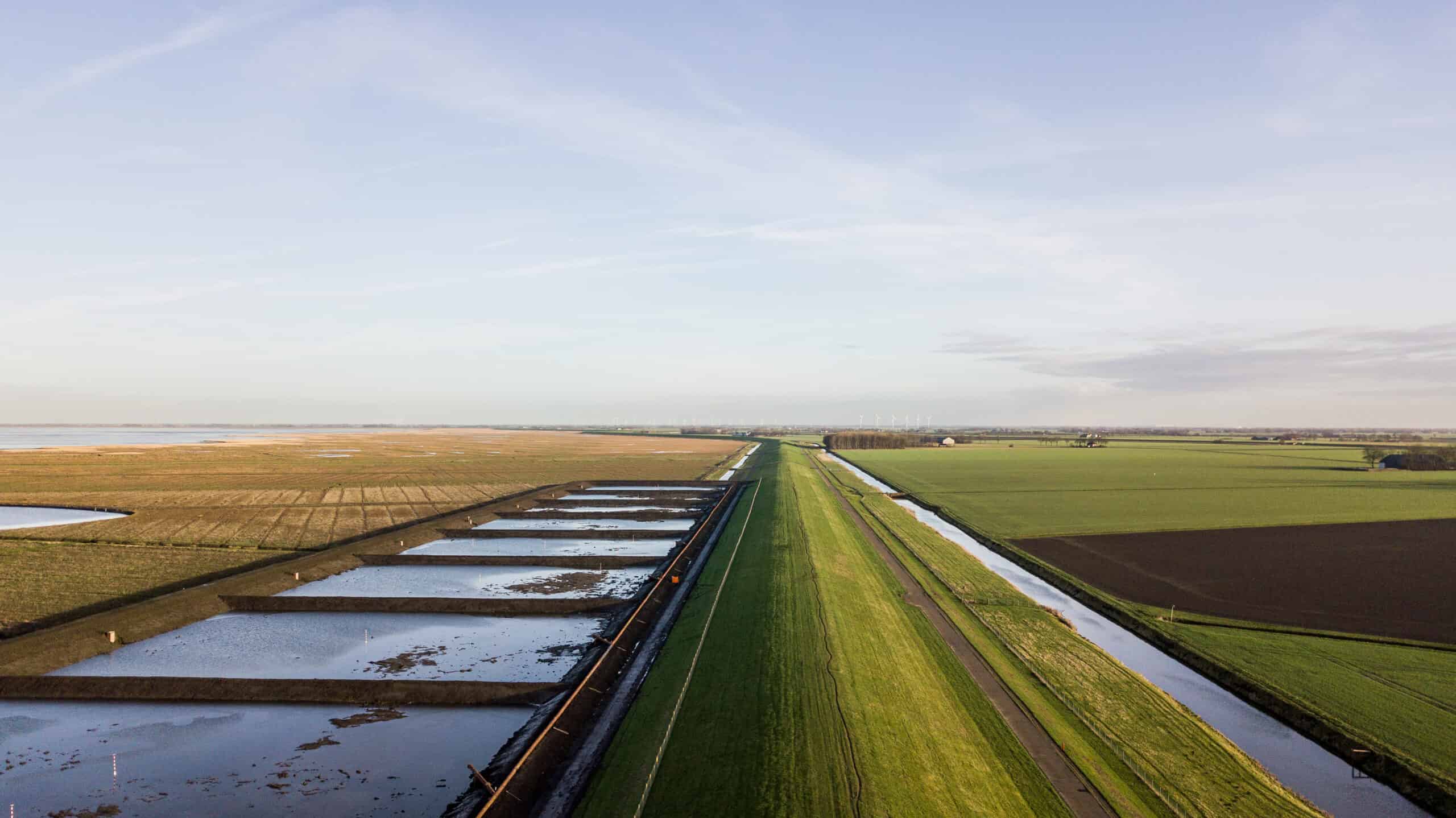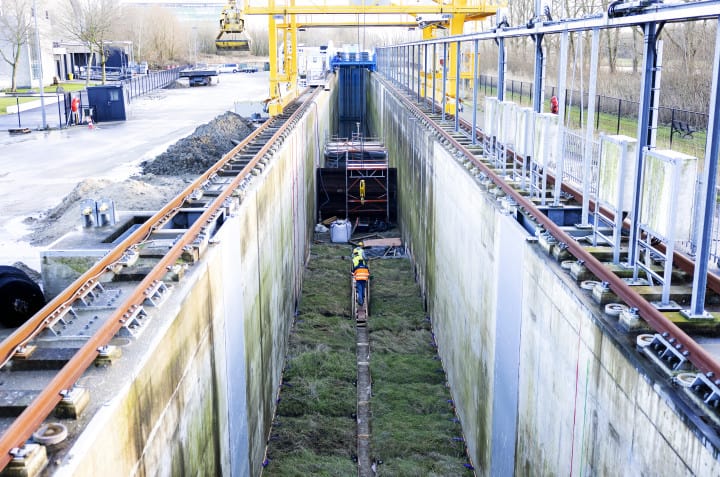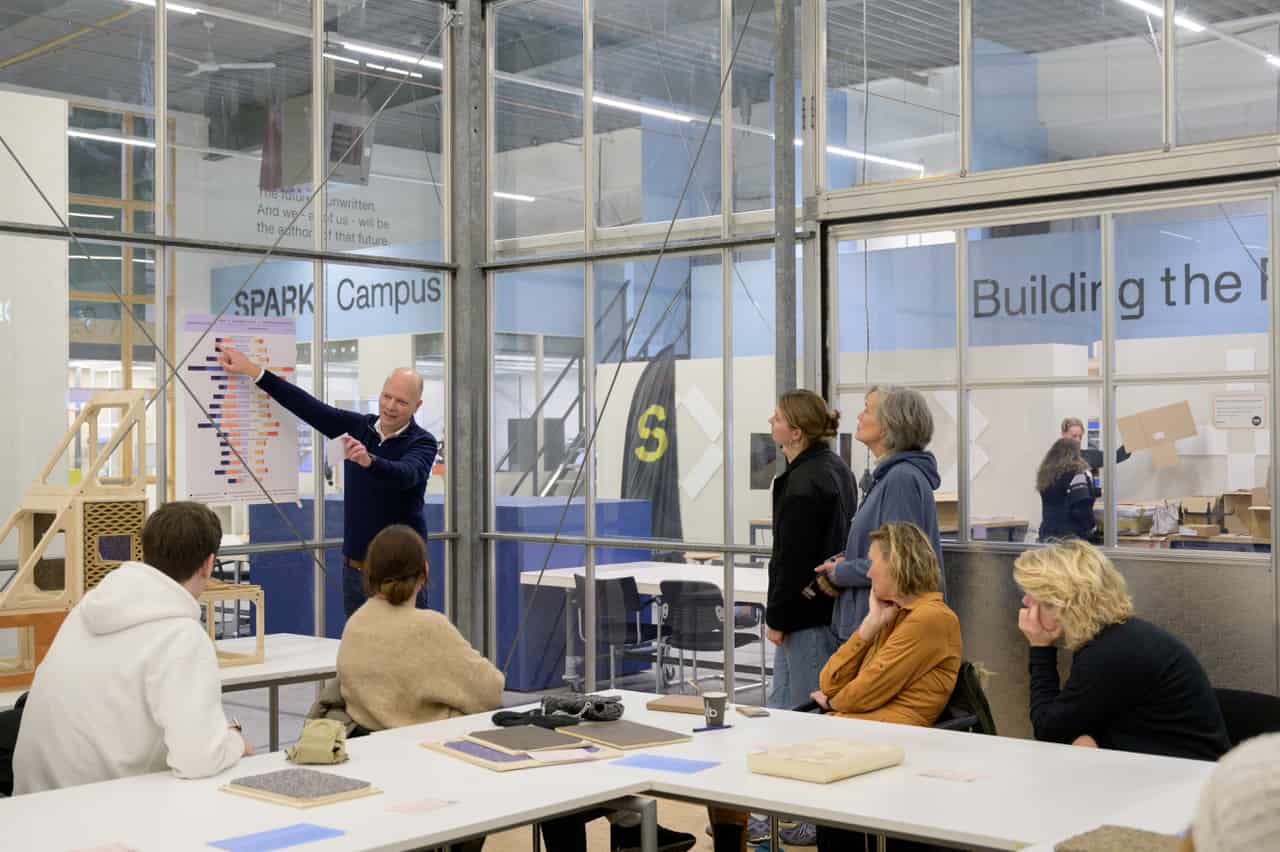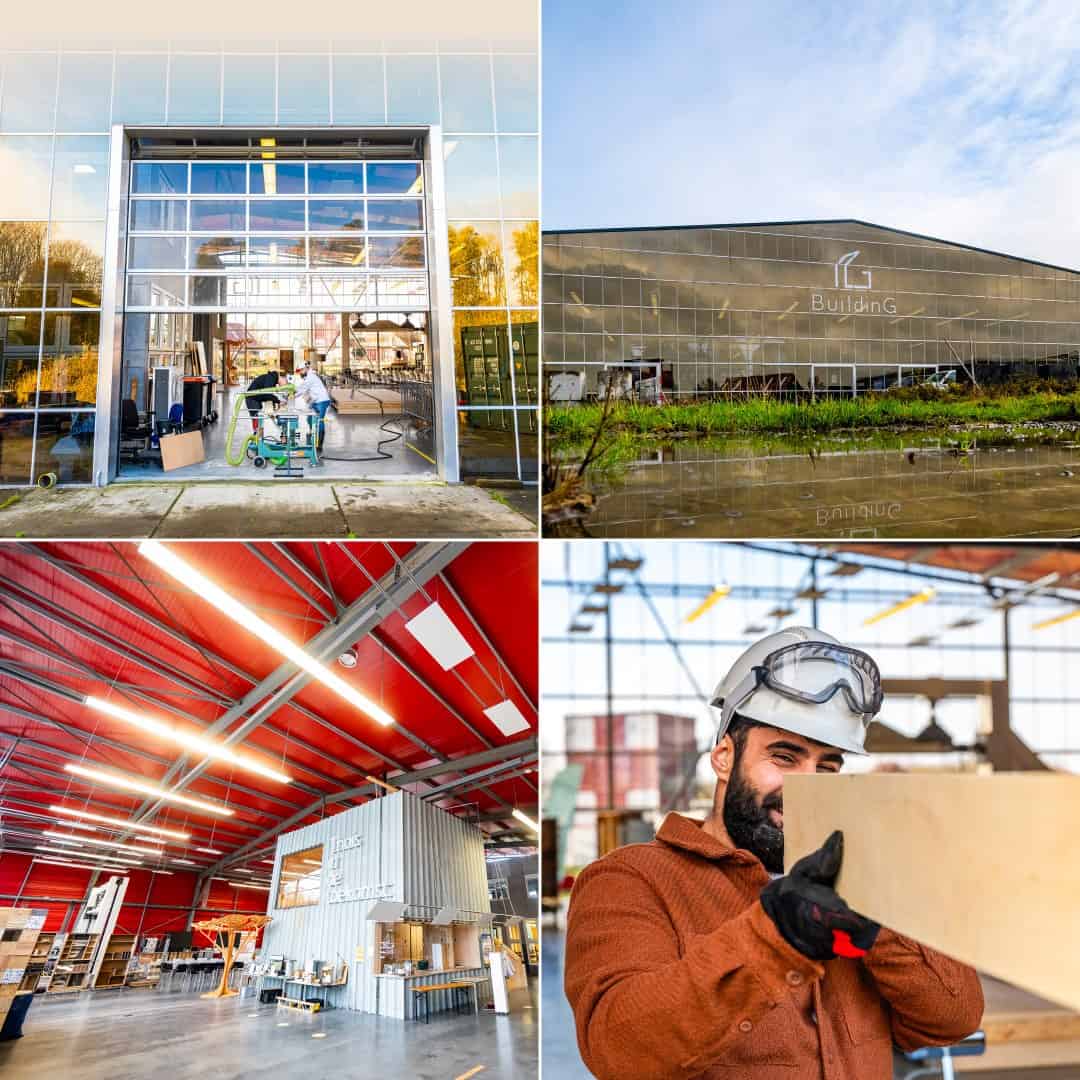
We are contending with a rise in sea levels. As a Delta country, the Netherlands is tasked with the major chore of reinforcing as many as 1,500 kilometers of dikes over the next few years. In Groningen, construction consortium EcoShape is working to find a sustainable solution. The Brede Groene Dijk (Wide Green Dike in English) was recently constructed in the northern province of Groningen, which utilizes surplus salty dredged sludge from the Eems-Dollard estuary. A first of it’s kind. “Building dikes with clay from nearby surroundings – that’s the future,” says project manager Erik Jolink.
The Netherlands has a long history where flooding is concerned. After the Flood Disaster of 1953 and countless storm surges, robust, safe asphalt dikes became the norm in the Netherlands. Yet there are drawbacks to this asphalt variant. After all, the production process of asphalt is environmentally damaging, as is its transportation to its destination. Now that a large number of dikes need further fortification due to rising sea levels, a sustainable alternative has become indispensable.
The Brede Groene Dijk is one such alternative. Commissioned by the Hunze and Aa’s Water Authority, Ecoshape recently constructed the Brede Groene Dijk in north-east Groningen. This sea dike, 750 meters in width, is made of salty dredging sludge from the Eems-Dollard estuary. The sludge has been ripened over three years into firm dike clay. ” With the construction of the dike, we are addressing two problems,” Jolink explains. “We are contributing to the ecological quality of the Eems-Dollard by removing excess sludge there. And by doing that, we are also reinforcing the dikes, which is badly needed in the coming years.”

Clay ripeners
The idea for the innovative dike was conceived 10 years ago. The Delta Program was researching new and sustainable forms of dike reinforcements that would be a good fit for the Wadden Sea World Heritage area. Plus, the Hunze and Aa’s Water Authority needed to reinforce the dike along the Dollard and the National Delta Program presented an opportunity to explore the idea of the Brede Groene Dijk.
In recent years, clay ripening sites were established at the port of Delfzijl and at Finsterwolde. This is where research was carried out on how the ripening of the sludge from the Dollard could be accomplished. They did this by depositing it in square sections of different thicknesses. The sludge was treated separately in each section. In one section, it was left undisturbed; in another, it was plowed over. This is how the ideal thickness was discovered and the ripening process took just three years, whereas in nature it could take up to decades. The robustness of the sludge was also studied by research institute Deltares in Delft, leading to the conclusion that dikes made from Dollard sludge are able to withstand storms that occur on average once every ten thousand years.
Sustainable and customizable
Besides the fact that the Brede Groene Dijk is resilient and also more sustainable than the asphalt variant, there is another advantage to the use of the dike. That is, the dike is capable of adapting more easily to ever-changing circumstances. “We are in limbo as to how much the sea level will rise and consequently don’t know exactly to what extent the dikes will need to be reinforced. Clay dikes are relatively easy to adjust. You just put some extra clay on top, whereas when you build asphalt dikes, you have to deal with things like milling, using sand and repaving asphalt.”
Thinking the other way around
For the construction of the Brede Groene Dijk, clay was used that did not meet the guidelines set out in 1996 for dike clay. “In the past, a design was first drawn up and then a contractor would look for the appropriate clay to complement it. We actually think the other way around. We look at the clay that we have available in the nearby surroundings and then devise a design to suit it. Which is why the dike looks a bit different. This is how it meets the requirements.” Clay is already found along many of the rivers in the Netherlands that also does not – or not entirely – satisfy the requirements, but can be used if the right design is applied.
3 years of research
The new dike is now being monitored for three years to study how it manages to hold up over time. “There are more salts in the sludge compared to traditional clay, so we will be keeping an eye out for any cracking,” says Jolink. “We’ve also sown in a herbal mixture. What impact that will have is something we will be looking into. We’re also going to study how we can manage the dike in the best way.” Starting in 2025, the Hunze and Aa’s Water Authority also intends to reinforce the remaining 11.5 kilometers of the Dollard dike with this local clay.
Within and beyond national borders
Ten years from now, several green dikes made from clay from nearby surroundings will also be located elsewhere in the country, Jolink assures us. “Dikes made from dredged sludge have a future, but consider, for example, dikes made from other types of clay sourced from nearby surroundings as well.”
Eventually, the concept of the Brede Groene Dijk will spread beyond national borders. “After all, we are affected by rising sea levels all over the world. By gaining experience here in Groningen now, the Netherlands can help protect other coastal areas around the world, Jolink says in conclusion.









